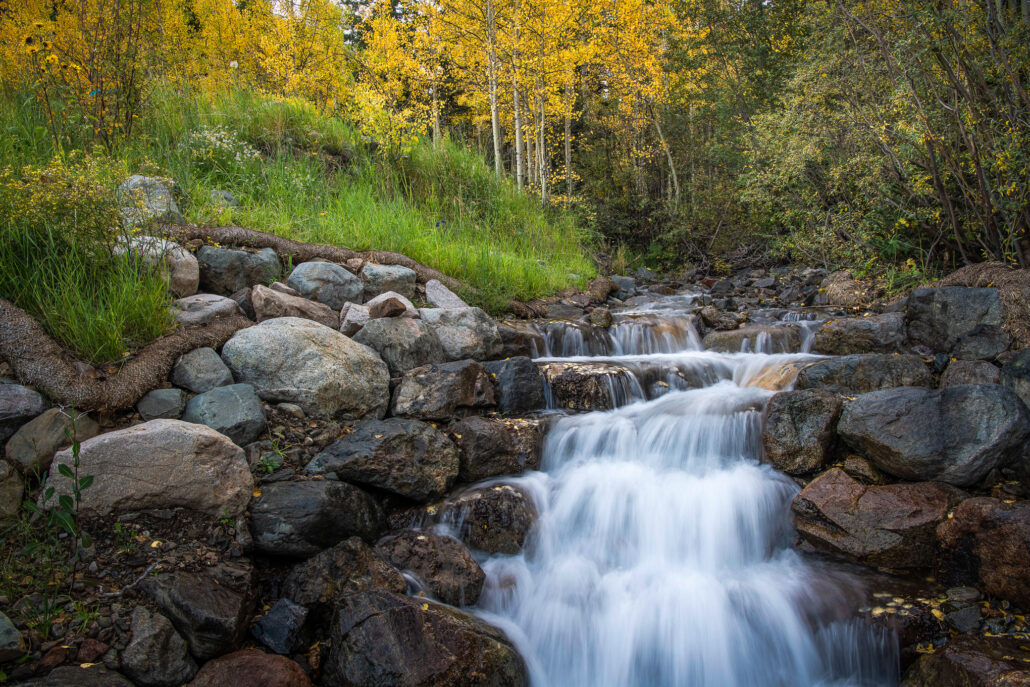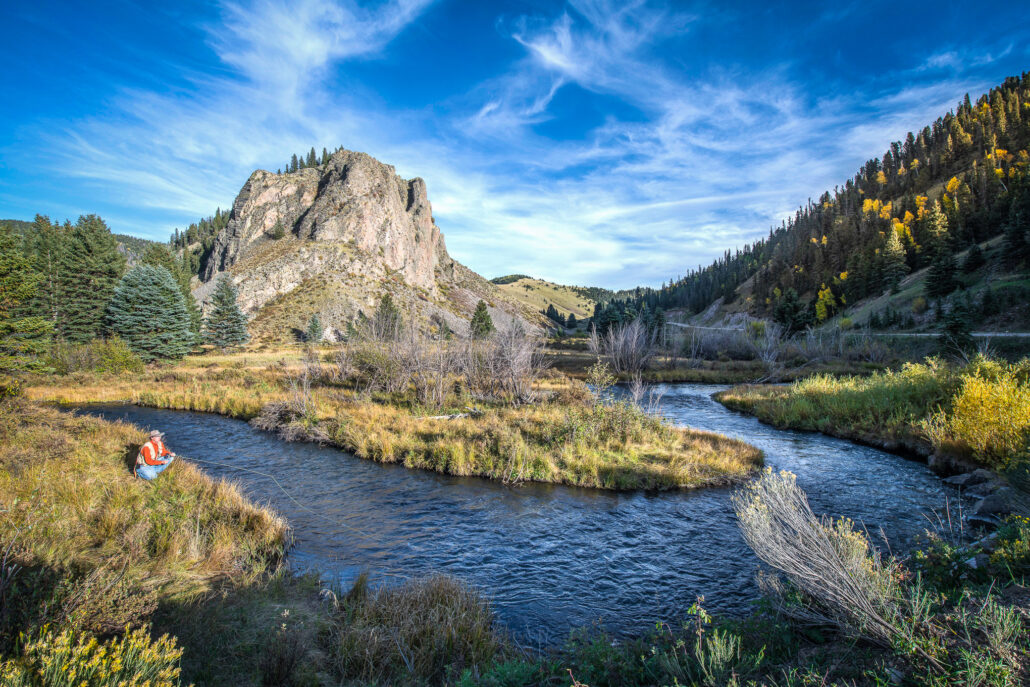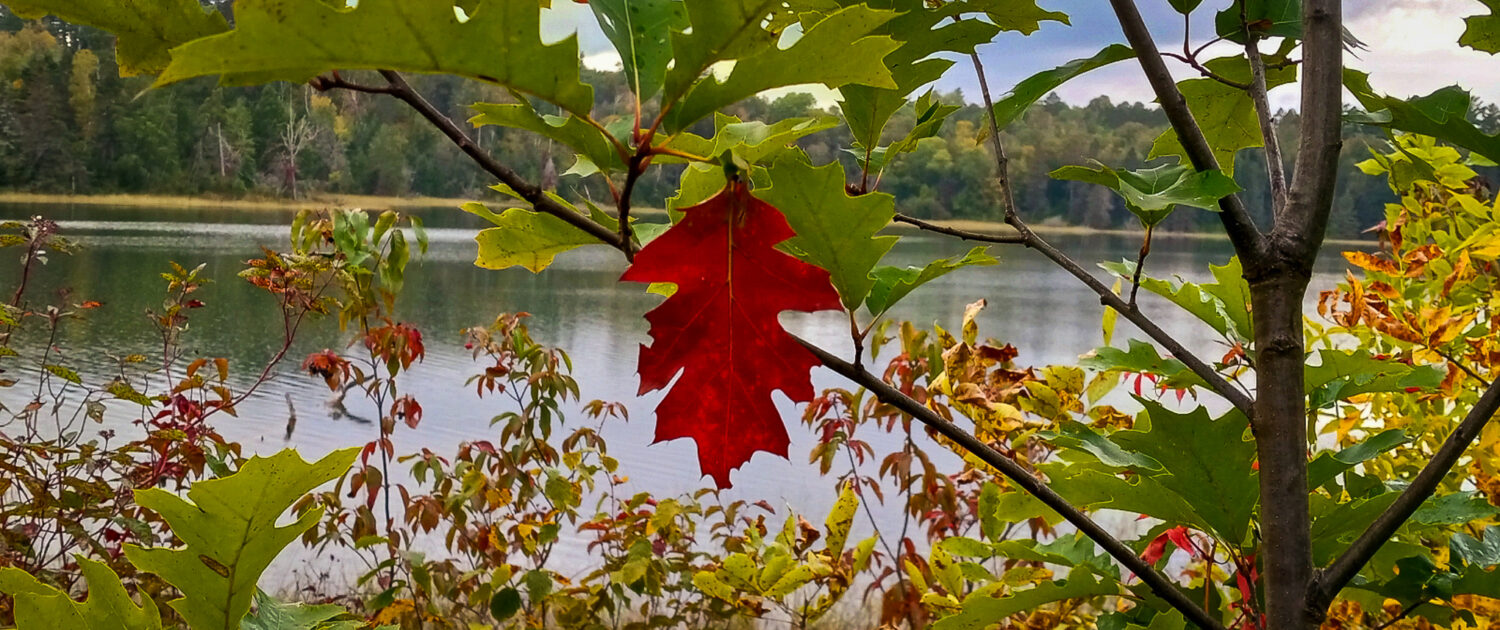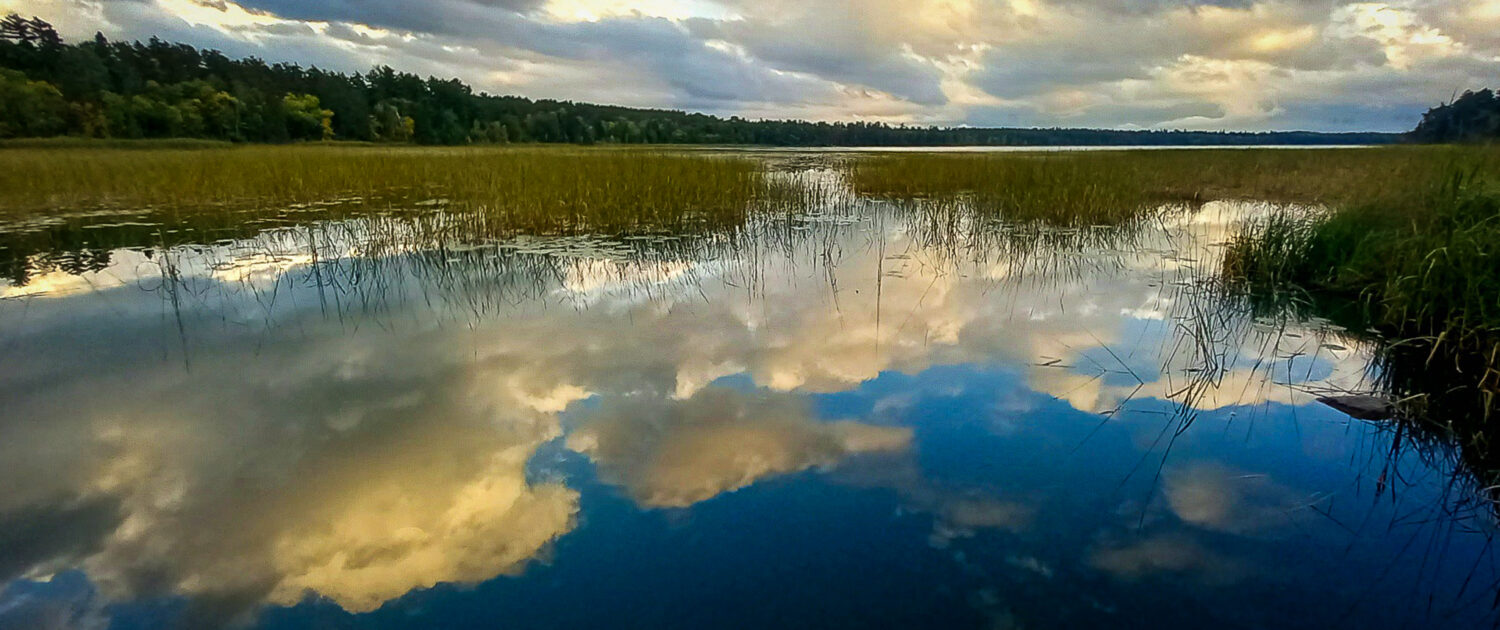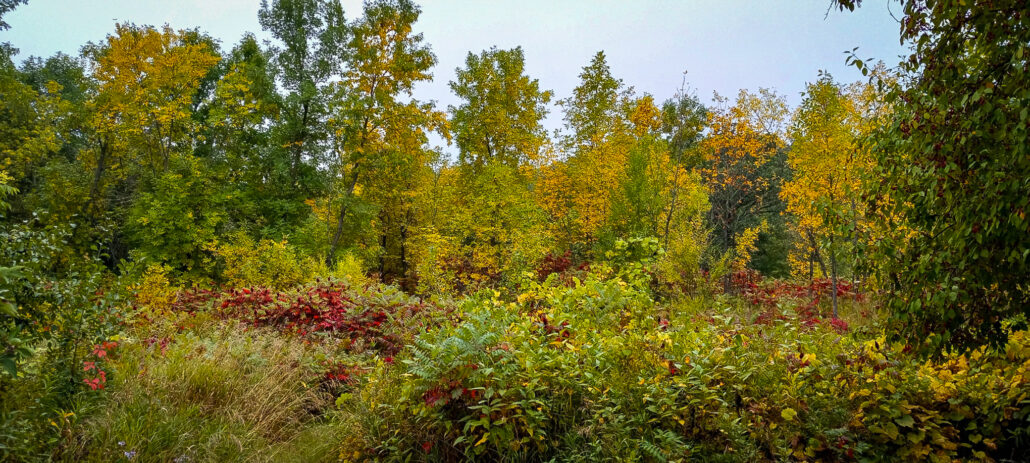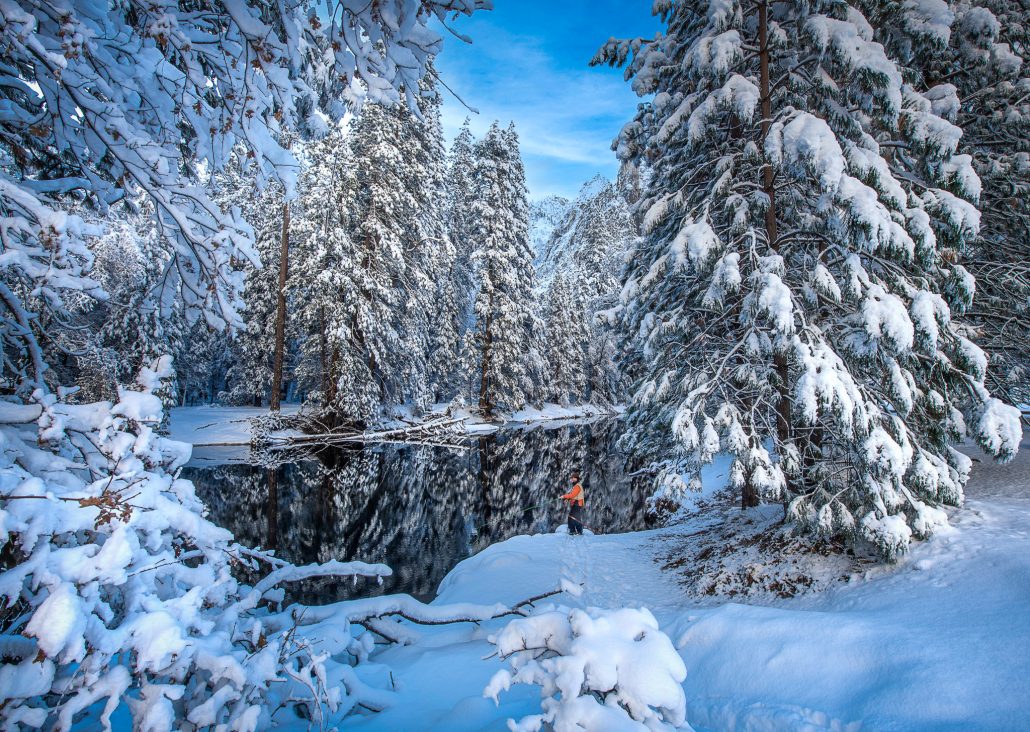Sangre de Cristo
On a family trip through the Sangre de Cristo mountains in northern New Mexico, color spotter Philip Reedy stopped to share peak color in this iconic corner of the Southwest.
Phil wrote he rented a condo at 9,200′ in elevation in Taos Ski Valley, east of Taos. There, the aspen are Near Peak and will peak within the week (similar to what we’re seeing in the Eastern Sierra).
He recommends the beautiful drive along Hwy 196 beside the Rio Costilla and included a shot from Comanche Point. Phil is seen in the foreground floating his fly line downstream, though if it were a scene from one of John Ford’s epic westerns, he’d have been astride a roan, looking up toward the glowing hillside of peak aspen, wondering whether he’d find the lost maiden somewhere in those mountains.
The Other White Mountains
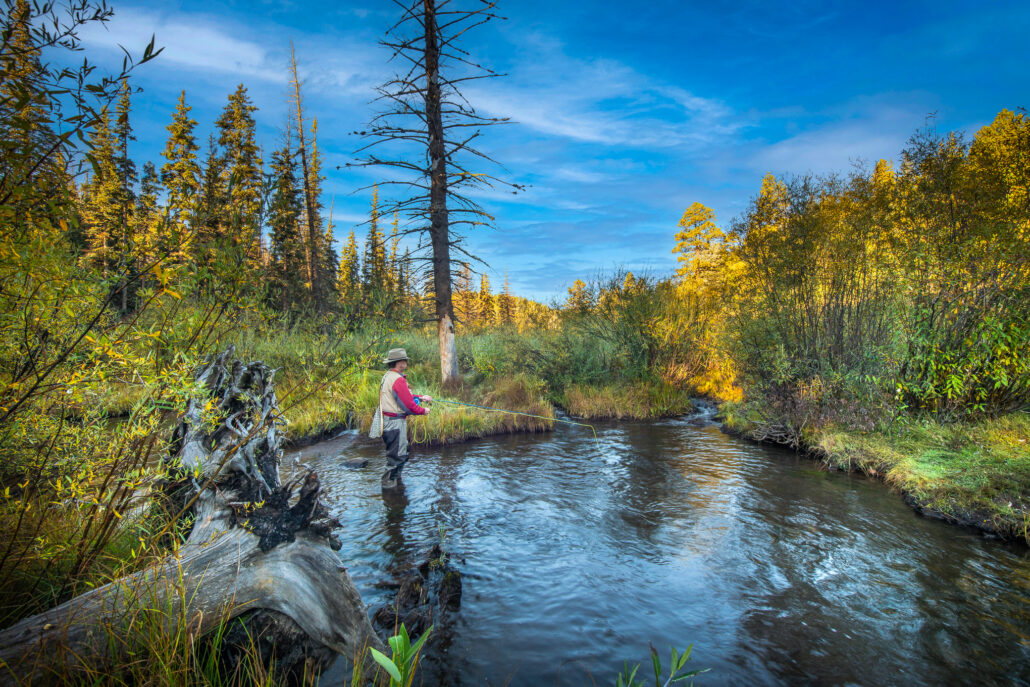
Arizona’s White Mountains share geography with California’s White Mountains. They’re both located near the eastern borders of their states.
They also share pockets of autumn beauty as color spotter Philip Reedy found when photographing fly-fishing locations.
He was in search of Arizona’s elusive Apache Trout, one of only two native species in Arizona and the official State Fish. It is boldly polka-dotted across its olive-yellow body with golden belly.
Growing as large as 20 inches, few Apache Trout that big are caught because of the smaller streams in which they live. Most live in shallow waters that meander through marshes and beside forests of conifer and aspen in the White Mountains. This constrained habitat limits their size to 9 inches.
Apache Trout were once nearly extinct, though conservation efforts reversed the decline. The specie remains Critically Threatened, as it has the unfortunate habit of hybridizing with rainbow and cutthroat trout.
Phil did not say if he was successful at catching and releasing an Apache Trout, though he did send these images of Patchy color among the aspen of the other White Mountains.
Great Lakes, Great Rivers
Alena Nicholas, who reported for several years from the San Bernardino Mountains before leaving California, has been traveling along the Canadian border visiting great lakes and great rivers.
Her travels through Minnesota, this past week, occurred just as frost coated foliage, encouraging color change. So, we asked Alena to send some snaps and impressions.
The red oak leaf (Quercus rubra) pictured above is an exotic in California, but a native resident and appreciated fall color provider in north midwest woods for its scarlet leaves.
Alena followed rivers that feed the Mississippi at its headwaters, visiting the towns of Thief River Falls and Red Lake Falls where clear, meandering shallow streams have not yet picked up the sediment that makes The Big Muddy famous.
In Minnesota’s forests, oak, maple and cottonwood are decorating branches with spots of red, orange and gold.
An occasional Tree of Heaven blares its satanic red. This is an invasive tree that is changing our forests, as reported previously within: The Devil’s Work.
- Minnesota (1,132′) – Just Starting (0-10%)
Why don’t evergreens lose their leaves?
Actually, they do. It just doesn’t happen all at once, with few exceptions.
Evergreen trees have both broad leafs and needles. Madrone, magnolia and photinia are examples of broadleaved evergreens, while pine, fir, cedar, spruce, and redwood have needled leaves.
Evergreen needles can last anywhere from a year to 20 years, but eventually they are replaced by new leaves. When that happens, the old needles turn color and drop, but not all together and not as dramatically as deciduous trees (e.g., maple, oak, dogwood, alder, birch).
The reason needles are green is that they are full of chlorophyll which photosynthesizes sunlight into food for the tree. It also reflects green light waves, making the needles look green.
Needles, just like deciduous leaves, contain carotenoid and anthocyanin pigments. You just don’t see them until the green chlorophyll stops being produced. Once that happens, hidden carotenoids (yellow, orange and brown) emerge, as is seen in the above photograph.
Additionally, red, blue and purple Anthocyanins – produced in autumn from the combination of bright light and and excess sugars in the leaf cells – also emerge once the chlorophyll subsides.
Yes, even evergreen leaves change color… eventually.
Why do deciduous trees lose their leaves?
It’s survival not just of the fittest, but of the wisest.
Deciduous trees drop their leaves in order to survive. As days grow shorter and colder, deciduous trees shut down veins and capillaries (that carry water and nutrients) with a barrier of cells that form at the leaf’s stem.
Called “abscission” cells, the barrier prevents the leaf from being nourished. Eventually, like scissors, the abscission cells close the connection between leaf and branch and the leaf falls.
Had the leaves remained on branches, the leaves would have continued to drink and, once temperatures drop to freezing, the water in the tree’s veins would freeze, killing the tree.
Further, with leaves fallen, bare branches are able to carry what little snow collects on them, protecting them from being broken under the weight of the snow. So, by cutting off their food supply (leaves), deciduous trees survive winter.
The fallen leaves continue to benefit the tree through winter, spring and summer by creating a humus on the forest floor that insulates roots from winter cold and summer heat, collect dew and rainfall, and decompose to enrich the soil and nurture life.
It’s a cycle of survival, planned wisely.
Deciduous conifers that drop leaves at once include: Larch, Bald Cyprus and Dawn Redwood.
In snowy regions, evergreen trees are able to carry snow because the waxy coating on needles, along with their narrow shape, allows them to retain water better by keeping it from freezing inside (which would otherwise destroy the leaf).
Needles also prevent snow from weighing down and breaking branches. Finally, needles allow an evergreen tree to sustain the production (though slowed) of chlorophyll through winter. Whereas, broadleaved deciduous trees would be damaged if they kept producing chlorophyll and didn’t drop their leaves.
Evergreen trees do lose their leaves and the leaves do change color. It just isn’t as spectacular.
Why Do Leaves Change Color?
Throughout spring and summer, chlorophyll (the molecule seen above which allows trees to absorb sunlight and produce nutrients) is made and replaced constantly.
However, as days grow shorter, “cells near the juncture of the leaf and stem divide rapidly but do not expand,” reports Accuweather.com. “This action of the cells form a layer called the abscission layer.
“The abscission layer blocks the transportation of materials from the leaf to the branch and from the roots to the leaves. As green Chlorophyll is blocked from the leaves, it disappears completely from them.”
That’s when vivid yellow xanthophylls, orange carotenoids and, due to a different process, red and purple anthocyanins emerge.
Yellow comes from Xanthophylls (compounds) and Flavonols (proteins) that reflect yellow light. Flavonols are what give egg yolks their vivid color.
Orange is found in leaves with lots of beta-carotene, a compound that absorbs blue and green light and reflects yellow and red light, giving the leaves their orange color. Though always present in the leaves, Carotenoids and Xanthophylls are not visible until Chlorophyll production slows.
Red comes from the Anthocyanin compound. It protects the leaf in autumn, prolonging its life. Anthocyanins are pigments manufactured from the sugars trapped in the leaf, giving term to the vernacular expression, “the leaves are sugaring up.”
The best fall color occurs when days are warm and nights are clear and cold. California’s cloudless skies and extreme range of elevations (sea level to 14,000′) provide ideal conditions for the development of consistently vivid fall color, as seen in these reports.
Peak fall color will begin appearing in the Eastern Sierra above 9,000 feet (you can drive right to it) during the last two weeks of September.
Secret Sedona
A lot of the superlatives said about Sedona, Arizona begin with “S” … secret, spiritual, spicy, sacred, starry and that’s just for “starters.”
So, when color spotter Mark Harding said he’d just returned from there and wondered if we would post them, our reply was, “Send them.”
We’re glad he did.
Sedona isn’t what you imagine when Arizona comes to mind. It’s high desert with pine forests, canyons, red rock, water and wonder.
- Oak Creek Canyon, Sedona, AZ (4,350′) – Peak to Past Peak, GO NOW, You Almost Missed It.
![]()
Colorful Colorado
There are 41 entry points to the state of Colorado, each of them is marked with a sign reading, “Welcome to Colorful Colorado.”
The signs were first created in 1950. Then in 1989 the state tourism office and Colorado Department of Transportation held a contest to redesign the sign.
A colorful sign including a Rockies-themed skyline was chosen without the motto, but the public missed the saying. So, the original signs were reinstalled.
Today, as old-fashioned as they may be, the Welcome to Colorful Colorado signs have become a fixture and apt description of what a traveler is about to see. Colorado is colorful, particularly in autumn.
Color spotters Elliot McGucken and Philip Reedy visited Colorado this past month and sent these colorful impressions of their visits.


Reedy had always wanted to see Colorado in autumn, so when he finished his visit to the Black Hills, he drove to Gunnison, Colorado and began looking for fall color, bemoaning, “Unfortunately, there is no “coloradofallcolor.com” website to provide guidance, so I did a lot of googling and Crested Butte seemed to be a favorite spot. We were not disappointed.”
A week previously, Steve Arita had missed peak there, but Reedy was there at the right moment with “mountainsides covered with aspens ranging from bare trees to yellow to orange to green. There are various dirt roads leading out of the town and up into the mountains, so we just picked a likely looking one and headed out.”
As for McGucken, his vibrant images tell of the breadth and power of the Rocky Mountains and their beauty when dressed in autumn colors. I couldn’t help not including one of his from Utah, as well.

And Reedy, well he can’t resist photographing a rancher’s cabin. This one’s along the Gunnison River on the road to Crested Butte.

Boyd Bicycles Boise

That’s Ryan Boyd’s son bicycling Boise where elm are lighting up Idaho’s capital city with gorgeous peak autumn color. What could be better than the Boyd boy on a bike in Boise? Not much, actually, cause he rides his bike well, the color is beautiful and alliteration is fun.
Ryan is a regular contributor to California Fall Color, often concentrating on urban forests and the beauty they bring to communities. He asked whether we’d like to see autumn in Idaho, even though it was from Boise instead of one of the state’s great national forests or parks. Sure ‘nough. Bring it on.
Of note, Idaho’s rabbitbrush looks a lot healthier than ours. Sierra rabbitbrush seems to be living through a difficult autumn.
- Boise (2,730′) – Peak (75 – 100%) GO NOW!


